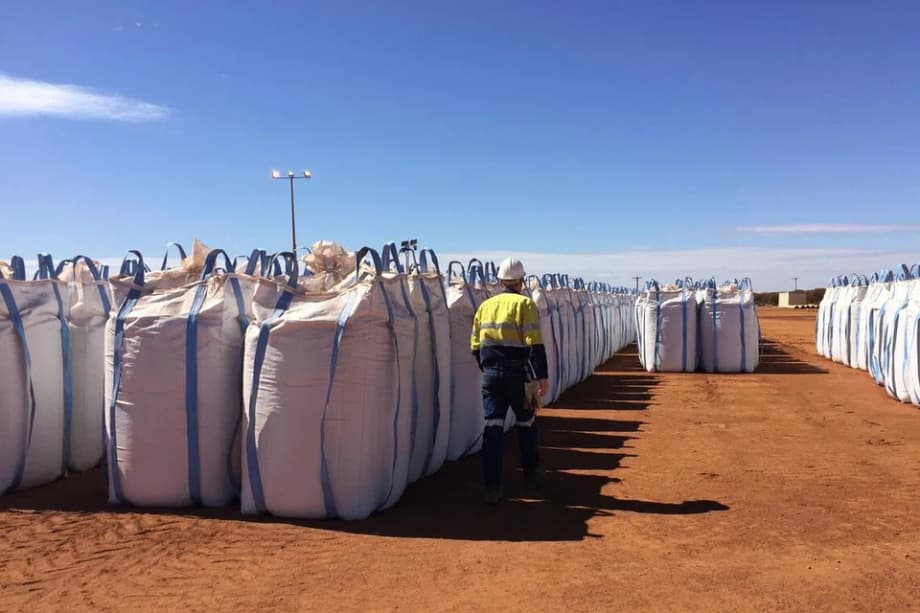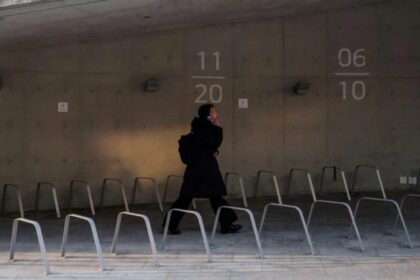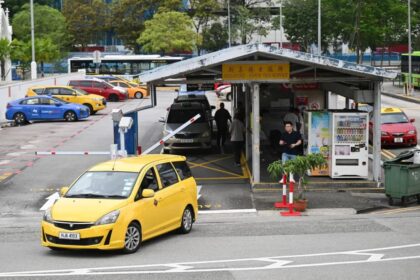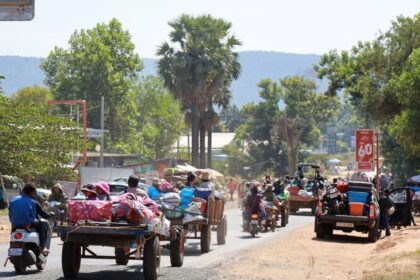Malaysia moves to capture more value from rare earths
Malaysia is inviting foreign partners to build a rare earth supply chain inside its borders, encouraging joint ventures with local firms to expand midstream and downstream processing. A nationwide ban on unprocessed rare earth exports took effect on January 1, 2024, designed to keep material onshore and draw investment into cracking, separation, and magnet manufacturing. The government says sovereign fund Khazanah Nasional is engaging Chinese companies to evaluate a refinery, while resource mapping continues with an allocation of RM10 million in the 2026 federal budget. The policy aims to increase Malaysian participation through equity and shareholding, not just raw material supply. Officials say no new processing plant proposals have reached the ministry yet, and the Lynas plant in Pahang can continue exporting its products to its chosen markets.
Malaysia estimates around 16 million tonnes of rare earth deposits. The country lacks the know how to mine and process them at scale, which is why it is courting partners with proven technology. Officials want to build midstream processing, the step where mixed rare earth concentrates are refined into individual oxides, and then encourage advanced manufacturing such as permanent magnets. The timing is sensitive. China, which accounts for most rare earth refining, has tightened export controls on some technologies. Buyers in the United States, Europe, Japan, and South Korea are racing to diversify supply chains.
Why rare earths matter
Rare earth elements are a group of 17 metals, including neodymium, praseodymium, dysprosium, and terbium. They are essential for high strength magnets used in electric vehicle motors, wind turbine generators, and defense systems. They also support catalysts, sensors, lasers, and a wide range of electronics.
The path from ore to magnets involves three broad stages. Upstream mining and concentration. Midstream cracking, leaching, and solvent extraction to separate and purify individual elements as oxides. Downstream metal making and magnet manufacturing. Midstream processing is the chokepoint. It is complex chemistry with large capital needs, highly trained staff, and strict environmental controls to manage acids and residues.
China controls the majority of midstream refining capacity. That dominance magnifies supply risk when trade tensions rise. Countries with deposits that only export raw material capture little value. Countries that add processing and manufacturing capture far more jobs, skills, and tax revenue.
Policy shift in Malaysia: export ban and value creation
Malaysia introduced a moratorium on raw rare earth exports effective January 1, 2024. The rule targets unprocessed material. Processed products, such as separated oxides or metals, can be exported. The intent is clear. Keep strategic minerals in country long enough to justify investment in plants, skills, and technologies that raise the value of every tonne extracted.
Officials have paired the ban with a push for mapping and data. The 2026 federal budget sets aside RM10 million to continue identifying where the richest deposits lie and how accessible they are. Estimates vary, but many officials cite roughly 16 million tonnes in states such as Perak, Pahang, Kelantan, Terengganu, and Kedah. A reconnaissance study in 2024 suggested a large potential resource, while authorities stress that more fieldwork is needed.
Malaysia has wrapped this initiative into a longer industrial strategy. The New Industrial Master Plan 2030 and the National Mineral Industry Transformation Plan 2021 to 2030 point to a mine to magnet vision. The plans aim to grow local content, train a skilled workforce, and encourage domestic firms to take equity in ventures so that Malaysian stakeholders earn returns beyond supply contracts.
A key policy message is neutrality in partner selection. Authorities say there is no restriction on which countries can invest as long as projects meet conditions, such as local processing, technology transfer, job creation, and compliance with environmental rules. The export ban is intended to be a lever that draws those commitments into Malaysia.
Analysts describe the export ban as a realistic way for Malaysia to gain leverage without excluding any market. Qarrem Kassim, an analyst at the Institute of Strategic and International Studies in Kuala Lumpur, viewed the policy as an assertion of economic agency.
“Malaysia’s existing capabilities give it a head start in integrating into global supply chains. Applying this export ban equally to all sides is a signal that Malaysia is willing to exercise its geoeconomic agency to prioritise its own development needs. This may result in potential foreign investment down the road.”
The approach follows a regional pattern. Indonesia applied a ban on nickel ore exports to move smelting onshore. Malaysia is taking a similar route for rare earths, although the chemistry, environmental risks, and technology requirements are different and in some respects more demanding.
Who is at the table as partners
Malaysia is courting multiple partners to reduce risk and broaden its technology choices. The government has emphasized joint ventures with local equity, and it has signaled that state linked investor Khazanah Nasional will help seed large projects.
China
Malaysia is in talks with Chinese companies on a refinery project that would process mixed concentrates into separated oxides, according to officials. One concept under discussion pairs Khazanah with a Chinese state owned enterprise that would contribute processing technology in exchange for access to resources and a share of downstream returns. China dominates refining and has decades of operating know how, which makes Chinese firms the fastest route to commissioning a plant. The challenge is balancing the speed of progress with the need to avoid over reliance on a single country for technology standards and market access.
China has also been active upstream. In Perak, MCRE Resources operates a legal mining venture in partnership with Chinalco, a Chinese state owned group. There are also sporadic reports of illegal mining. That complicates federal efforts to enforce environmental rules and track output.
Japan and South Korea
Malaysia has sounded out Japanese and South Korean companies for roles in non radioactive rare earth processing and magnet making. Japan has long experience in high purity separation and magnet manufacturing. South Korea is building clean energy and defense supply chains that require reliable magnet supply. Engagements remain at an exploratory stage, but they provide a path to diversify technology sources, give local engineers new training opportunities, and open markets for downstream products.
Malaysia already hosts magnet makers. Shin Etsu Malaysia produces rare earth magnets, and Bomatec manufactures plastic bonded magnets and assemblies. This base can help integrate upstream and midstream steps into finished products.
Australia and Western buyers
The Lynas Advanced Materials Plant in Pahang already processes feedstock from Australia into rare earth oxides, often sold to Japan and South Korea. The plant is the largest of its kind outside China. Each license renewal has drawn public scrutiny over waste management, yet the plant has continued operating with regulatory conditions and has a current extension to March 2026. Lynas shows that large scale midstream operations can work in Malaysia. New projects could follow a similar model, with long term feedstock supply locked in from mines abroad, not just local ore.
Western buyers are also reorganizing their critical minerals strategies. Recent agreements among allied countries aim to finance projects, set standards, and reduce exposure to supply shocks. That creates potential offtake commitments for Malaysian producers, especially if plants meet strict environmental and transparency benchmarks.
Closing the technology gap
Malaysia acknowledges a shortfall in both mining and processing technology. Midstream processing requires complex cracking and leaching circuits, solvent extraction trains with dozens of stages, precision control systems, and high standards of waste treatment. Several elements, such as dysprosium and terbium, are present in lower concentrations and require careful flowsheet design to capture efficiently.
Foreign partners can bring process design, equipment, and training. Malaysia can offer land, infrastructure, an industrial workforce, and stable policy settings. Joint ventures that include local equity would keep technical knowledge in country through long term staff development. Over time, Malaysia wants to expand into downstream metal making, magnet pressing and sintering, recycling of scrap magnets, and even design engineering for motors.
Feedstock is another question. The scale and quality of domestic deposits are still being mapped. New plants can start with imported concentrates, as Lynas does, while Malaysia completes its geological work. That sequencing would help meet near term demand for magnets without waiting for new mines to reach production.
Environmental and social safeguards
Rare earth processing uses acids and organic solvents. It can generate residues that require secure storage or further treatment. Malaysia has experienced public concern over these issues, most visibly around the Lynas plant and its handling of low level radioactive byproducts from imported ore. Those concerns underscore the need for strict monitoring, independent audits, and clear plans for residue management, including permanent disposal or conversion into stable materials.
The government has framed its policy as a way to prevent reckless extraction and to align with environmental, social and governance standards. Partners will be expected to use best available technologies. That includes multi stage wastewater treatment, acid recycling, robust air emission controls, and engineering designs that minimize the risk of leaks. A credible safeguard regime is not only a legal requirement, it is also a competitive factor. Buyers in automotive and wind power increasingly screen suppliers for verifiable low impact production.
Upstream mining carries its own risks. Mining approvals sit largely with state governments. Projects will need community engagement, plans to limit erosion and sedimentation, and restoration teams to return land to productive use after mining. Strong enforcement against illegal mining is essential to protect communities and protect genuine investors.
Permits, coordination and incentives
Rare earth projects cross several agencies. Investors face approvals for environmental impact, hazardous waste, water discharge, land use, and industrial safety, with reviews at both state and federal levels. Companies often cite the complexity of this process as a reason for delay. Clear timelines, single window services, and consistent standards would cut project risk.
Malaysia has tools to attract investment, including tax incentives administered by the investment authority, industrial parks with utilities, and sovereign co investment from Khazanah for strategic projects. The government has also reiterated a neutral stance on investors. Projects are judged on merit, not on the flag of the company.
Investor outlook and timeline
Foreign investors see both opportunity and risk. The upfront cost of a modern separation plant runs into the hundreds of millions of dollars. Returns depend on stable feedstock, reliable offtake, and careful management of environmental liabilities. The prize is participation in a growing magnet market that underpins electric vehicles, wind power, consumer electronics, and defense systems.
A reasonable timeline for a new refinery runs from two to four years from a final investment decision, given permitting, engineering, equipment delivery, and commissioning. Projects that rely on imported feedstock can move faster than greenfield mines. Early announcements are likely to center on joint ventures with clear commitments on technology transfer, local hiring, and residue management.
Malaysia’s strategy gives it a credible path to a larger role in the rare earth supply chain. The export ban creates a policy anchor. The presence of an operating plant in Pahang provides a benchmark. Partnerships with China can accelerate buildout, while parallel engagements with Japan, South Korea, Australia, and Western buyers can reduce exposure to any single market. The outcome will turn on execution, especially on environmental performance and steady regulatory coordination.
Key Points
- Malaysia is inviting foreign joint ventures with local equity to build midstream and downstream rare earth processing.
- An export ban on unprocessed rare earths took effect on January 1, 2024, designed to draw investment into domestic plants while allowing exports of processed products.
- Khazanah Nasional is in talks with Chinese firms on a refinery project, and RM10 million in the 2026 budget supports continued resource mapping.
- Malaysia estimates roughly 16 million tonnes of rare earth resources, with further exploration and verification underway.
- The Lynas plant in Pahang remains the largest processing facility outside China and continues to export to its chosen markets.
- No new proposals for additional processing plants have been submitted to the ministry under the current policy framework.
- Malaysia is exploring partnerships with Japan and South Korea to diversify technology sources and expand magnet manufacturing.
- Strong environmental safeguards, waste management plans, and community engagement are central to public acceptance and investor confidence.
- Permitting spans multiple agencies and levels of government, so clear timelines and consistent standards are crucial for new projects.
- Malaysia aims to shift from raw material sales to a mine to magnet ecosystem that captures more value, jobs, and skills inside the country.












